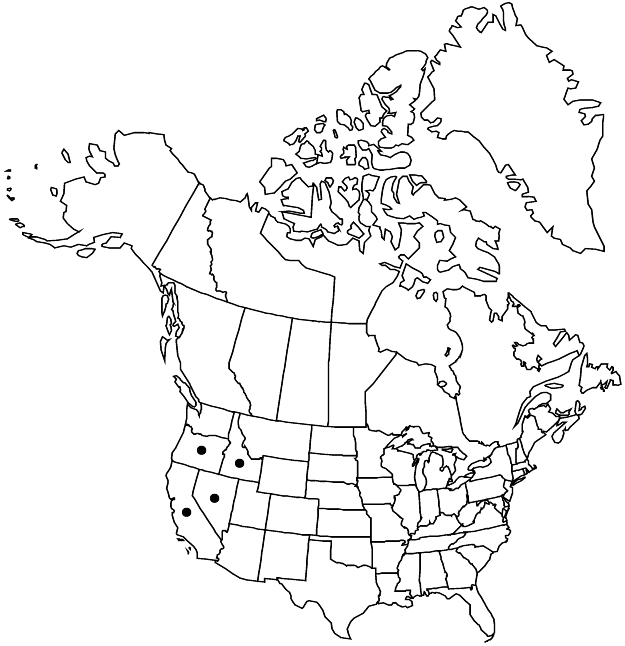Difference between revisions of "Eriogonum microtheca var. ambiguum"
in P. A. Munz, Suppl. Calif. Fl., 61. 1968.
GeoffLevin (talk | contribs) m (GeoffLevin moved page Eriogonum microthecum var. ambiguum to Eriogonum microtheca var. ambiguum: Correcting spelling of specific epithet) |
GeoffLevin (talk | contribs) m (Fixed italics in discussion) |
||
| Line 34: | Line 34: | ||
|elevation=(1100-)1900-3300 m | |elevation=(1100-)1900-3300 m | ||
|distribution=Calif.;Idaho;Nev.;Oreg. | |distribution=Calif.;Idaho;Nev.;Oreg. | ||
| − | |discussion=<p>Variety ambiguum occurs in eastern California, northwestern | + | |discussion=<p>Variety <i>ambiguum,/i> occurs in eastern California, northwestern Nevada, and southeastern Oregon. In portions of its range, var. <i>ambiguum</i> appears to be little more than a yellow-flowered phase of var. <i>laxiflorum</i>. However, where the two occur together, intermediates are rarely found, and limited garden studies indicate that flower color is genetically fixed. Nonflowering specimens from southern Owyhee County, Idaho, have been tentatively assigned to this taxon.</p> |
|tables= | |tables= | ||
|references= | |references= | ||
Revision as of 20:12, 27 October 2022
Subshrubs or shrubs, 0.5–5 × 1–8 dm. Stems: caudex absent; aerial flowering stems 0.2–1 dm, mostly floccose. Leaves: blade 0.8–2.5 × (0.2–)0.3–0.6(–0.8) cm, densely white- or reddish-brown-tomentose abaxially, floccose adaxially, margins rarely revolute. Inflorescences 1–5(–12) cm; branches tomentose to floccose. Involucres 2–2.5 mm, tomentose to floccose. Flowers (1.5–)2–2.5(–3) mm; perianth yellow. Achenes 1.5–2 mm.
Phenology: Flowering Jul–Sep.
Habitat: Sandy to rocky soil, sagebrush and saltbush communities, pinyon-juniper and conifer woodlands
Elevation: (1100-)1900-3300 m
Distribution

Calif., Idaho, Nev., Oreg.
Discussion
Variety ambiguum,/i> occurs in eastern California, northwestern Nevada, and southeastern Oregon. In portions of its range, var. ambiguum appears to be little more than a yellow-flowered phase of var. laxiflorum. However, where the two occur together, intermediates are rarely found, and limited garden studies indicate that flower color is genetically fixed. Nonflowering specimens from southern Owyhee County, Idaho, have been tentatively assigned to this taxon.
Selected References
None.